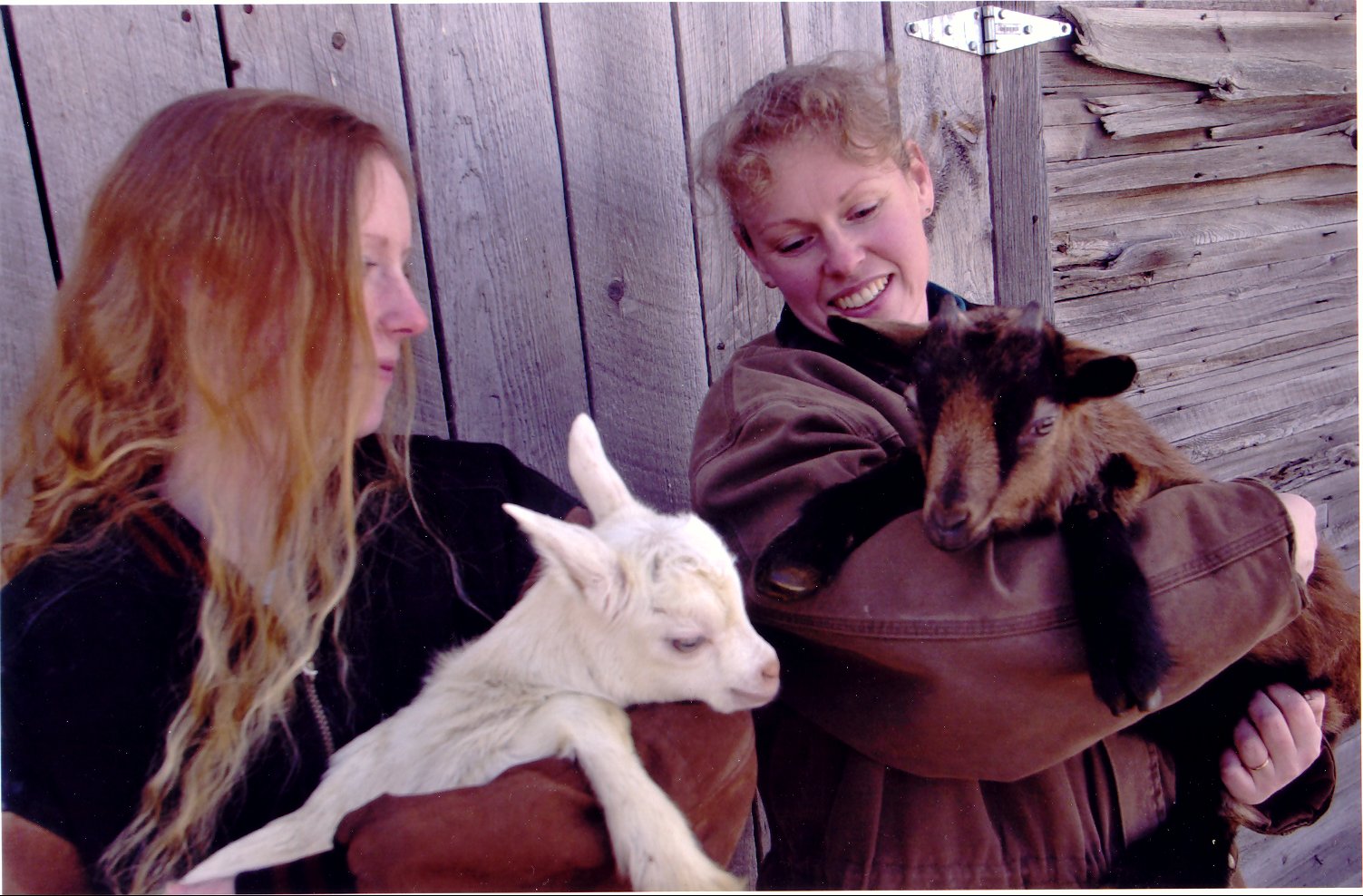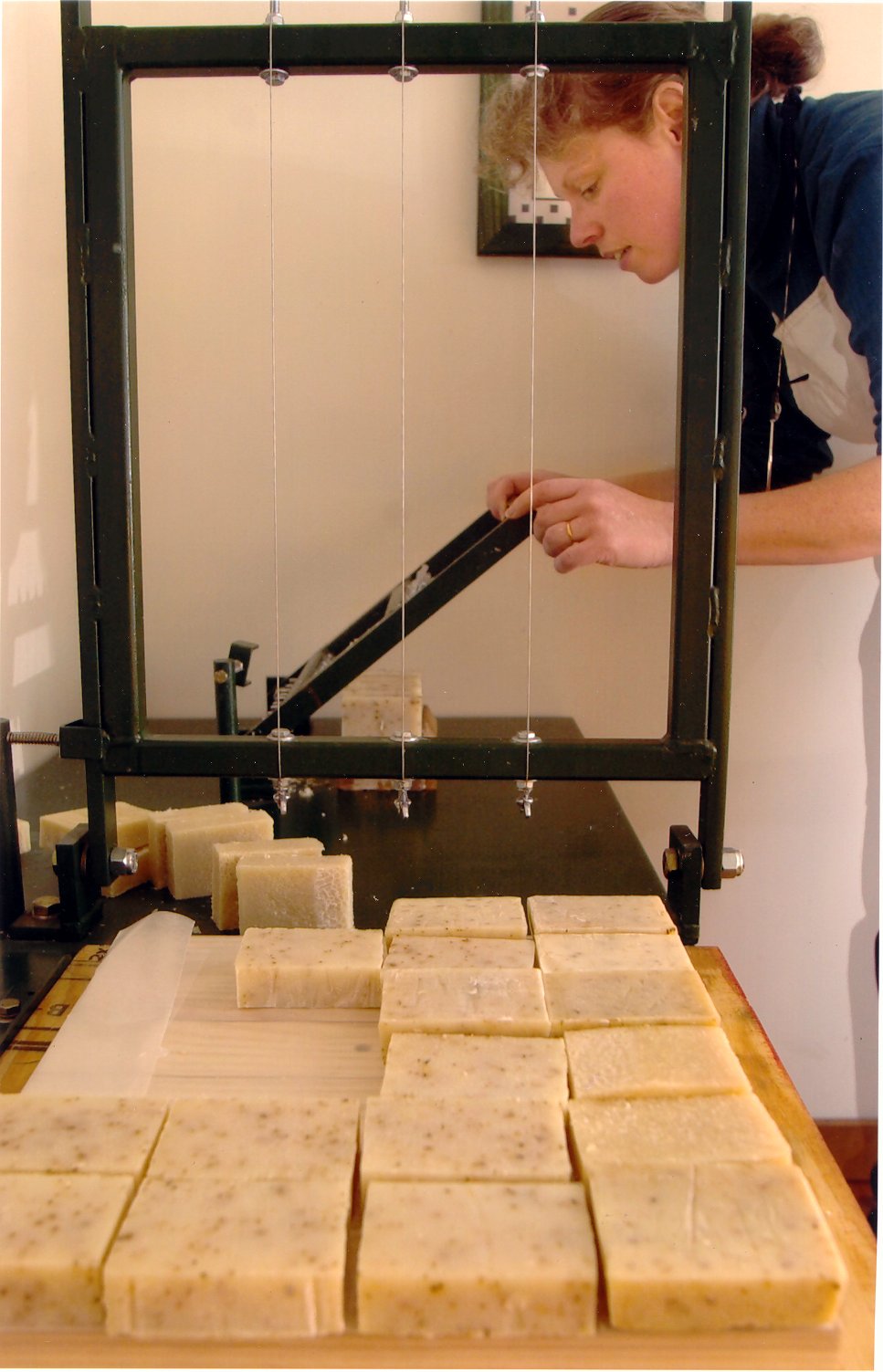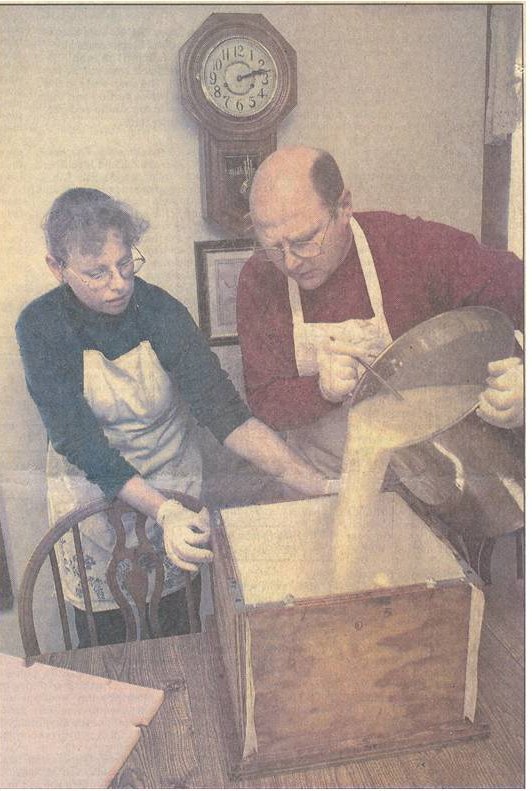HARRISVILLE -
If Killmaster
really has ghosts, they're probably clean.
After all, there isn't much left in the once lumbering town in Alcona County. Killmaster,
about 10 miles west of Harrisville, now is a legitimate ghost town, featuring some ramshackle buildings,
an old rundown church and memories.
But a spirited soap maker is using a little elbow grease to put Killmaster back on the map.
Or at least into the history books.
Casey Makela's milk soaps are marketed under the name Killmaster Soapworks Natural
Soap Co. Her company, started in 1985, operates in what it calls "the sudsiest ghost town in the
U.S." The soap workshop, and the farmhouse the Makela family calls home, is located within the village
limits of old Killmaster.
Makela used the Killmaster name "to keep the town's memory alive," she said.
"It created a historical pur- pose for my company," Makela said of her soap-making ven- ture.
"Our crafts today were life skill staples 100 years ago."
About 100 years ago, Killmaster was in its heyday. Residents were familiar with the ring of
the ax and whine of the saw as the trees were felled and floated down the Pine River to market.
John H. Killmaster, an attorney and lumber Industry pioneer in Gustin Township near Harrisville founded the town around the'1850s.
By the mid-1880s, Killmaster
and associates had built a water-powered mill and the railroad reached far enough north to stop at Killmaster. At
that point, the town became a lumbering center for the territory.
Today, Casey Makela, her husband, Bill, and some of their seven children are Killmaster's captains of industry.
They are helped along by the goats that provide the milk in the organic soaps the Makelas make.
Casey Makela began makmg soap the old fashioned way about 20 years ago.
Makela's soap is up to 50 percent milk and uses all organic ingredients.
She began experimenting with soap making in the early 1980's
before she migrated to Michigan from New England. Making soap wasn't easy.
"Little information was available on the topic," Makela recalled. "Developing a soap making process was
like doing chemistry lessons without a teacher or a book. It was taking chemical compounds and mixing them together.
I made a lot of mistakes."
Coming up with the milk soap formula was even more difficult, she said. Makela became a pioneer in the development of making soap with milk.
By necessity, the Makelas began raising goats in 1985.
I was going to make soap," she said. "I needed the farm to raise the animals absolutely cruelty free to produce milk for the soap.
Everything had a purpose and one thing led to another."
She began with Oberhasli dairy goats originally from Germany.
The Makelas' dozen German goats now produce so much milk that the family uses the leftovers for
homemade fudge and cheese. The family also milks eight horses and 12 sheep for their soap.
"The milk from these animals is full of natural moisturizing lipids," sey Makela said.
"And we milk them during e earliest part of the year when the milk is the richest,
creamiest and has the most moisturizing content."
 Casey Makela, right, and daughter Marion, 15, one of seven Makela children,
play with baby goats, part of the herd that provides milk for much of their soap-making business. The white
goat held by Marion is a Swiss Saanen goat while the one held by Casey is a German Oberhasli dairy goat,
which is an endangered species in the United States. The Makelas have been
involved in conservation efforts for the Oberhasli goats.
Casey Makela, right, and daughter Marion, 15, one of seven Makela children,
play with baby goats, part of the herd that provides milk for much of their soap-making business. The white
goat held by Marion is a Swiss Saanen goat while the one held by Casey is a German Oberhasli dairy goat,
which is an endangered species in the United States. The Makelas have been
involved in conservation efforts for the Oberhasli goats.
|
|
Mixing up a 100-pound batch of soap takes the Makelas three hours.
Then the soap sets in insulated mold for 18 hours and is cut into bars with a special cutter (SUOMI soap cutter)
Bill Makela made for the job.
The soap ages for six weeks and is wrapped in recycled paper before being sold.
 Soap Maker Casey Makela cuts bars of soap from a 60 pound block created by
the Makelas on their farm/soap factory. The soap cutter (SUOMI soap cutter) was designed and constructed
by Casey's husband Bill. The soap stays in the mold 18-20 hours before cutting and
then is cured 6-8 weeks in the studio and gift shop on the Makela's farm
Soap Maker Casey Makela cuts bars of soap from a 60 pound block created by
the Makelas on their farm/soap factory. The soap cutter (SUOMI soap cutter) was designed and constructed
by Casey's husband Bill. The soap stays in the mold 18-20 hours before cutting and
then is cured 6-8 weeks in the studio and gift shop on the Makela's farm
Makela makes dozens of soap varieties: Great Lakes soaps have names such as Erie tide,
Huron Horizon or Mackinac Breeze; Creamy Milk-Based Soaps include Peaches & Cream,
Honey Cream and Almond Joye. There are even soaps for children and pets.
Killmaster Soapworks puts out thousands of pounds of soap each year.
The Makelas sell the soap at the Farm Market in East Tawas on Saturdays during the summer months
and through Killmaster Soapworks
Web site, www.milksoaps.com
Besides making soap to use and sell, Casey Makela teaches the craft.
She's authored three books on the subject and conducts soap-making workshops and tours at her home,
where she also has a small shop. From May to December, the
family welcomes visitors to the farm & soap factory - but it's
helpful to call before visiting.

Visitors get to see and hear a little about Killmaster's history.
Through the soap factory window, visitors can see street signs from the old town.
"They lead into hayfields," Casey Make'la said. "And the church, with a toppling steeple,
was another clue something was here before."
A hotel was built in or near Killmaster in 1886. the same year the trains came.
Armies of lumbermen attacked the timber. Jobbing camps appeared to the west and
farms and homesteads were hewn on the clearings from the lumbering.
New businesses came, including a general store, livery stable, doctor, lawyer and others.
But new lumbering sites popped up to to the west and the politics of township organization
slowed Killmaster's growth. By 1905, the population was 150. In 1918, it had dwindled to 75.
Though officially a ghost town, Killmaster still appeared on highway maps in 1969.
Casey Makela said few residents of the area are old enough to remember much about the town,
although the Alcona County Public Library has some documentation on the village.
"And that is a sad scenario because a substantial amount of rich Michigan history is fading away," Makela said.
She remembers the town hall was demolished four years ago after the roof caved in.
The Bailey School was recently relocated to a plot near the old Sturgeon Point Lighthouse in Harrisville.
"At least there it will be safe," Makela said
|



